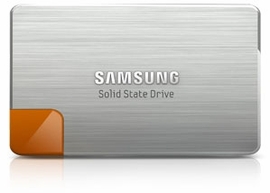Based on my previous experience in teaching my Virtualization (VT) class, I knew that I needed to have something portable to host the various VT environments on. This is what I have assembled for this years class, after testing it as a pure Hyper-V server it is clear that it is very capable.
Processor:
AMD 1090t, Six Cores @ 3.4 Ghz (200 Mhz mild OC)
Motherboard:
This has worked out really well as the onboard video means that I don’t have to worry about a video card and the NIC was automatically discovered by both Server 2008 R2 SP1 and ESXi 5. This along with the 1090t set me back “only” $170.
RAM:
16GB (4x4GB) Kingston Hyper-X DDR3 1333 ($60)
Hard Drives:
1x Samsung 470 128GB SSD ($115 used), 1x OCZ Petrol (Indillix based) 128GB SSD ($110 AMIR), 1x Hitcahi 250GB 7200 RPM Drive (old), 1x Seagate 7200RPM drive (older), 1x 16GB USB3 Drive (For ISO files under Hyper-V only, connected to an add in 1x PCIe USB3 card, $16)
The hard drives were really the crucial piece. Under ESXi 5 and prior to the SSD drive investment creating VMs was a fine experience when done one at a time, but when ten groups of students tried to do it the system just crawled along due to the lack of disk IO. It took nearly two hours just the students to activate Hyper-V and reboot the VMs a couple times.
Just this weekend, under stress testing, I was able to create ten Server 2008 R2 SP1 VMs under Hyper-V simultaneously and it only took 10 minutes! That’s a huge improvement!
Case/Power Supply/DVD Drive:
Cooler Master Elite 310, Cooler Master GX 450W/Samsung DVD-RW. $30, $25, & $18 respectively.
So, for about $550 I’ve built a PC that can act as a server for my class and that I also have access to 24/7. It draws about 200W under load and spends its “spare time” running the BOINC Client and helping to save the world from various maladies. I am pretty happy how it turned out, I think it is fairly balanced from a CPU/RAM/Disk standpoint.
–Nat
